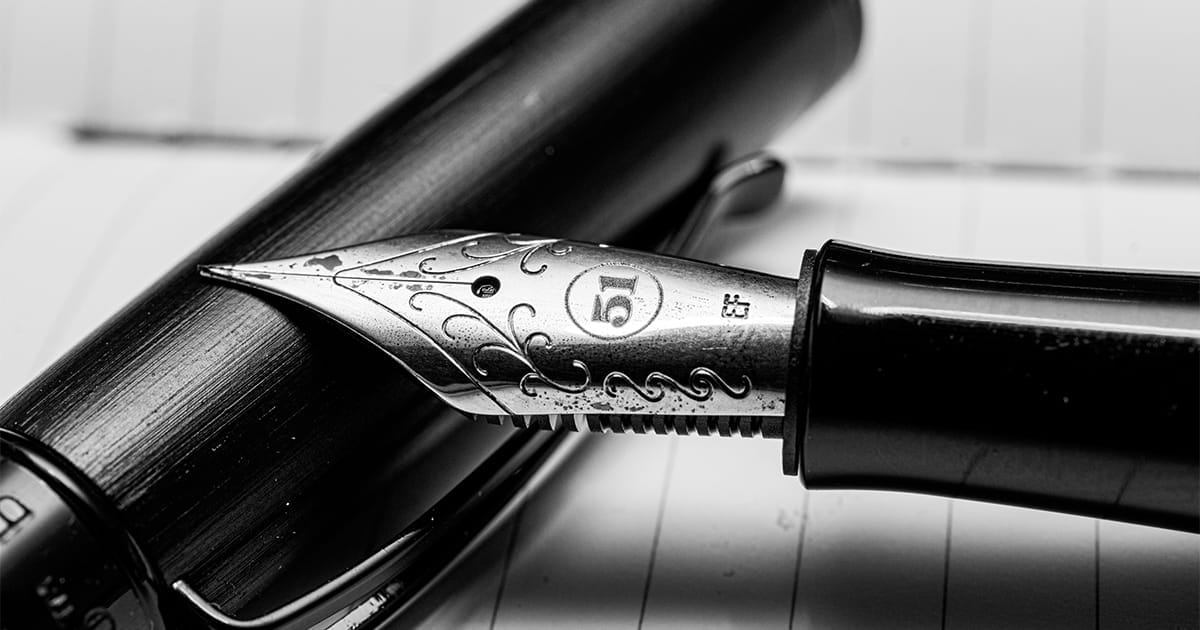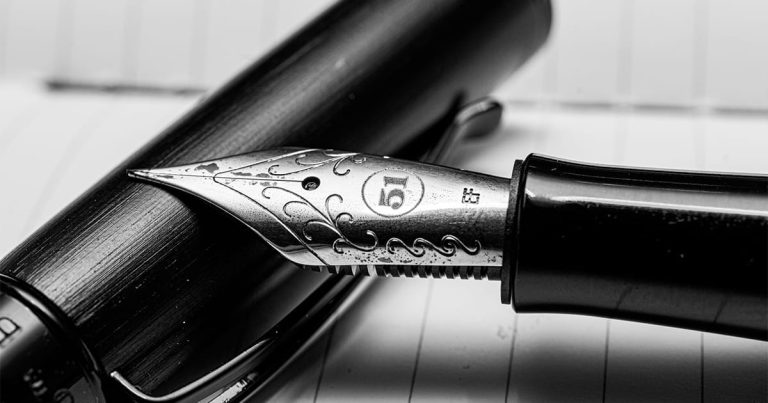Early in my writing career, I discovered a troubling truth about those arguments I’d had in my (very, very cool) adolescence about spelling, commas, pronouns and other conundrums of the English language.
No right answers exist.
No definitive tome rules over all of English to set the record straight—in part because the contradicting rules each have merit in some situations.
Instead of a single set of writing laws, we have style guides. These magnificent manuals tame the whims of writers and place boundaries on the problematic potential of our language. And, yes, tell us whether or not to use an Oxford comma.
Professional writers should know how to pick a style guide, which guide is standard for which types of writing and how to use a style guide to polish your writing (and impress your editors).
Which Writing Style Guide is for You?
What is a writing style guide?
A style guide is a collection of conventions for writing for an industry, brand or project.
Historically published as books and now also as online databases, they guide writers and editors in grammar, spelling, punctuation, word usage, formatting and other questions that come up while you write because of the variance and fluidity of the English language.
Most industry style guides are descriptive, so they make recommendations based on how people use language commonly, rather than dictate rules for how we should use it.
Style guides for brands or projects are more often prescriptive, setting guidelines for how an individual or company should use language in written materials.
Some companies use “style guide” to mean a set of standards for tone, voice, visuals and programming to guide their marketing and design efforts. I generally call that a “brand style guide” or “visual style guide” to distinguish from the writing or editorial style guide.
Why do you need a style guide?
A style guide ensures consistency and clarity in writing across an industry, company or project.
English offers a ton of ways to write almost anything, even within one continent. Sometimes deciding which way to go is a matter of expression — like whether to say “traffic light” or “stop-and-go light.” Sometimes the answer is written into common grammar rules, like using “me” as an object and “I” as a subject.
But a lot of times, a correct answer doesn’t exist — like whether you can start a sentence with “because.” Style guides step in to determine a standard in those cases to keep your book, publication or marketing materials from being a mess of inconsistencies driven by personal preferences.
How many writing style guides are there?
Tons of style guides exist across industries and genres, and new ones pop up frequently. Most writers will encounter four commonly used guides: AP style for journalism, Chicago style for publishing, APA style for scholarly writing and MLA style for scholarly citation (more on each of these below).
Style guides tend to emerge to define standards for distinct styles of writing — technical, academic, journalistic, fiction or blogging, for example. They often start as guides for one organization and become industry standard.
What is the best writing style guide?
No style guide is more accurate or correct than another. The best one for your writing depends on what you’re writing and where it’ll be published.
How to pick a style guide for your writing project
To find the best style guide for the kind of writing you do, consider:
- House or corporate style: If you’re working with a publication, publishing house or company, first ask your editor or manager whether it uses a house style guide. They’ll point you to internal documentation or let you know which industry guide they prefer
- Genre and medium: Learn which style guide is standard for the type of writing you do. This will help you prepare manuscripts before you have a publication on board, and it’ll give you a place to turn if you work for a company that doesn’t document editorial standards
- Niche or field: Lots of niche style guides exist for industries or academic fields, like chemistry or sociology, to address unique issues
Writing style guides every writer should know
These are the four main style guides you’ll encounter as a professional writer, plus some alternatives to be aware of.
Associated Press Stylebook
The AP style guide is officially called “The Associated Press Stylebook.” It publishes a biennial spiral-bound print book and the AP Stylebook Online.
What is AP style?
AP style is a set of standards for writing in news media and one of the most comprehensive style guides. It includes recommendations for grammar, spelling, punctuation and usage; plus topical guides to define standards for news topics and cultural trends (like gender-neutral terms).
Who uses AP style?
AP style is the industry standard for journalism, and most blogs and content marketing. It’s technically the house style for the Associated Press, and most newspapers adopted the standards because many publish AP stories alongside their own.
How often is AP style updated?
Editors update AP Stylebook Online throughout the year to address questions and major news events. Up until 2020, a new print edition was published annually, but is now updated and published every other year. AP editors debut changes each spring at the ACES conference for editors.
Chicago Manual of Style
Colloquially called the Chicago style guide or CMOS, the Chicago Manual of Style has been published by the University of Chicago Press since 1906, including the Chicago Manual of Style Online since 2006.
What is Chicago Manual of Style?
CMOS is a set of standards for writing in commercial and academic publishing and one of the most widely used style guides. It includes recommendations for grammar, spelling, punctuation and usage; plus manuscript formatting and two variations of source citation.
Who uses Chicago Manual of Style?
Chicago is the preferred style of print publishers in both fiction and nonfiction, and many academic journals in the humanities. Instructors in college or high school courses might teach Chicago-style citation but don’t usually enforce other preferences of the manual unless you’re writing for publication, like in grad school.
How often is Chicago style updated?
The press has published 17 editions of CMOS since 1906, most recently in 2017. In recent history, an updated print edition has been published about every seven years. CMOS Online is updated throughout the year, and editors address timely topics and questions online through the Chicago Style Q&A.
Publication Manual of the American Psychological Association
The APA style guide, officially the “Publication Manual,” started in 1929 as a lengthy article from a group of psychologists, anthropologists and business managers. APA has published seven editions of the “Publication Manual” since the first in 1952, and the APA Style Blog since 2009.
What is APA style?
APA style is a set of standards to make scientific writing easier to comprehend. It includes recommendations for grammar, spelling, punctuation and usage; plus its signature in-text citation style, ethical standards for publishing research and how to format an academic paper.
Who uses APA style?
Scholarly writers and journals in many social sciences, humanities, health care and some natural sciences follow APA style. College-level instructors might prefer APA-style citation, and most high school and college instructors prefer APA-style paper formatting, but neither tend to enforce other APA recommendations.
How often is APA style updated?
APA has published seven editions of the “Publication Manual,” most recently in 2020. Since 1974, a new edition has come out about every 10 years. The APA Style website is updated with each new edition, and editors update the blog occasionally with timely topics and news.
MLA Handbook
MLA style began in 1951 when the Modern Language Association of America published the “MLA Style Sheet.” It’s been publishing the updated “MLA Handbook” for students since 1977 and the bulk of its contents online through the MLA Style Center since 2009.
MLA used to publish a separate “MLA Style Manual” for grad students and professional scholars, but that went out of print in 2016. Now “MLA Handbook” is meant for writers at all levels.
What is MLA style?
MLA style is primarily a set of guidelines for citation and formatting in academic papers. It’s best known for its source citation template. It includes limited guidance on writing mechanics and no recommendations for usage.
Who uses MLA style?
Scholarly writers and journals in segments of the humanities focused on language and writing, like language studies and literary criticism, follow MLA style. English students in college and high school might use MLA style for citation and paper formatting instead of APA style.
How often is MLA style updated?
MLA has published eight editions of the “Handbook” since 1977, most recently in 2021. It updates and publishes a new print edition about every three to five years, and answers ongoing writer questions online through Ask the MLA.
Alternative style guides
The field or niche you work in might need to address unique publishing quirks the heavy-hitting style guides don’t cover.
Organizations have responded to that need over the years by developing their own style guides. These might be alternatives or complementary to the dominant style guide in a genre.
Popular guides journalists use to complement or supplement AP style include:
- The New York Times Manual of Style and Usage provides additional and alternative guidance to the AP Stylebook, like recommending the use of courtesy titles instead of referring to a subject just by their last name (e.g. Mr. Smith).
- BuzzFeed Style Guide defines standards for writing online and on social media, codifying such conventions as how to spell “I’mma” (as in “I’mma let you finish…”) and leading the way in guidance for inclusive language
- Diversity Style Guide is a project of the Center for Integration and Improvement of Journalism at San Francisco State University that gathers guidance from several organizations to help media cover people of diverse races, ethnicities, genders, abilities and more
- Conscious Style Guide includes guidance on usage, framing and representation to be inclusive and respectful of any audience
- GLAAD Media Reference provides guidance on covering LGBTQ stories and issues
- Guardian and Observer Style Guide offers insights into the newspapers writing, editing and English usage
Some complements and alternatives to APA style for academic writing include:
- AMA Manual of Style from the American Medical Association for writing about health and medicine
- NLM Style Guide from the National Library of Medicine, published online-only by the National Institute for Health for writing about health and medicine
- Scientific Style and Format by the Council of Science Editors
- ACS Style Guide from the American Chemical Society for chemistry professionals
- The Bluebook citation guide for legal professionals and scholars
- Oxford University style guide for educational institutions and its staff
Popular guides for technical writing for formal reports and user manuals include:
Other books about writing
Some commercial books about writing are not authoritative in any industry, but writers and editors keep them on hand for style and usage recommendations. Some popular books:
- “The Elements of Style” by William Strunk, Jr. and E.B. White, a well-known guide detailing just a few rules of grammar and punctuation, composition and formatting, and a list of commonly misused words and phrases.
- “A Dictionary of Modern English Usage” by H.W. Fowler (also known as “Fowler’s Modern English Usage”), a guide to word choice, grammar and style peppered with Fowler’s humor and unshakable opinions.
- “Garner’s Modern English Usage” by Bryan A. Garner, a witty reference book on grammar and vocabulary.
- “Writing with Style” by Lane Greene, an insight into what one can learn from the Economist
House style guides and book style sheets
Any publication or company you write for likely has a house or corporate style guide. In most cases, they follow an industry guide—like AP style—as a base. The house style guide documents anywhere it makes sense to deviate and addresses questions the industry guide doesn’t answer.
If you write a book, your editor creates a style sheet for the manuscript. It includes style rules, plus a list of names of places and people in the book to ensure consistent spelling throughout.
Getting the most out of a style guide
Once you know which style to follow and set up your online subscription or stack your desk with reference books, here’s how to put those magnificent guides to use.
Know when to consult it
No one expects a writer or editor to know all the rules of any style guide, no matter how much you’ve used it in your career. The trick to using a style guide is knowing when to consult it.
Become familiar with the biggest differences among styles, and train yourself to check the guide when you encounter them. Some major triggers:
- Headline capitalization: AP style uses sentence case, while Chicago uses title case, and APA uses each in different situations. House style is often different from any of these
- Citation: MLA, APA and Chicago each offer templates for citing sources within a paper or a reference list
- Punctuation: Notably, guides differ in their recommendations for the Oxford comma, the percent symbol, hyphens and dashes
- Numbers: Whether to spell a number or use a figure varies among style guides and even within each, depending on how you use the number. Also look up how to handle dates, ages and time
- Compound words: Recommendations for compounds change quickly, especially as words become common. Check a current guide for whether to write health care, healthcare, or health-care, for example
- Abbreviations and acronyms: Should you use a state abbreviation (like Fla.) or a postal code (like FL)… or always spell it out? In acronyms like U.S., do you need the periods? AP says yes, Chicago says you can go either way
- Formatting: Chicago and APA italicize book titles, while AP uses quotation marks around them. Guides also include preferences for formatting bulleted lists, block quotes, sentence spacing and more
- Words about technology: Common usage changes quickly, and your content can look outdated if it doesn’t keep up—for example, a hyphen in “e-mail” or capitalizing “Internet.” Check your current style guide for recommendations, but also address these in house style if conventional guidance doesn’t make sense for your audience
- Brand names: Will you use camel case for eBay and iPhone? All-caps for IKEA? A hyphen in Wal-Mart or Walmart? Style guides make recommendations, but this is another area house style should address more thoroughly for your audience
- Identifying groups of people: The boundaries for respectful and inclusive language are ever-shifting, so terms you’re accustomed to could be outdated. AP style, complementary media guides and APA style include up-to-date guidance based on common usage and recommendations from advocacy groups. Refer to those if your industry guide doesn’t include preferences
A good rule of thumb: Consult your style guide, even when you think you know the answer! You might misremember, conflate styles or miss a vital update.
Don’t deviate if you don’t have to
If you have the privilege of contributing to a company’s or publication’s style guide, start with an industry-standard guide (AP, Chicago or APA) as a base, and stick to it unless you have a compelling reason not to.
Writers and editors in your industry are likely familiar with the basics of the common style guide, but every in-house idiosyncrasy is a detail you have to teach each freelancer and new hire you work with. It’s also an opportunity to appear incorrect to readers and peers.
Don’t sweat the small stuff
I say this as both an editor and a writer!
Writers, familiarize yourself with big style differences and important in-house preferences, but don’t get preoccupied with minute details. Editors are there to correct those; it’s not worth your time to spend all day perusing a style guide for answers.
Kick your writing style up a notch
Knowing how to use a style guide boosts your value as a writer. It means you’ll turn in cleaner copy and require less work from editors.
On a fun note, it also helps you understand your work better! Learning the linguistic conventions in your industry and niche and reading the explanations for them can help you define the audience you write for, how they think and what they know.
Plus, as someone who works with words, knowing how style guides work deepens your relationship with the work you create. Writing a sentence becomes exhilarating when you comprehend the simultaneous fluidity and brute force of the language you’re using.
Right? Just me?
Photo via GuadiLab / Shutterstock









